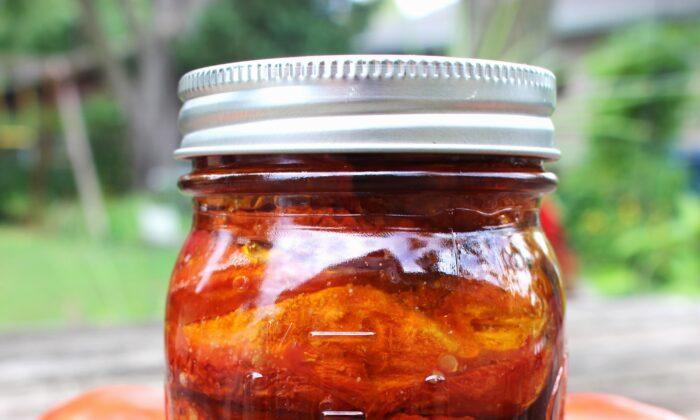Fresh salsa is delicious, but it can be leveled up by fermenting it to create another layer of flavor. The process of fermentation melds the ingredients together and gives the salsa an effervescence that otherwise wouldn’t exist.
I’ve been told by some people lacking fermentation experience that when they think about fermentation, they often think of it as leaving food out on the counter to rot. That’s actually the opposite of what’s happening. Although the food does partially break down when fermented, it’s becoming preserved.
The bacteria that naturally occurs converts the sugar in the produce into lactic acid. The lactic acid creates an acidic environment, which then allows the good bacteria to thrive while keeping any harmful bacteria at bay. This process creates probiotics, the healthy-belly bacteria that we all hear so much about.
Probiotics are the good bacteria found in your digestive system that aid in gut health. Through studies, researchers have found that a variety of probiotics naturally occur in your digestive tract—and these are the same types of bacteria that occur in fermentation. Therefore, eating a variety of healthy fermented foods boosts the helpful bacteria in your gut. Of course, you could take a supplement and get billions of bacteria in one dose; however, you’re getting a much larger variety of bacteria when eating a variety of fermented foods.
Today, I’m going to share three super simple salsa recipes: mango, tomato, and tomatillo. The flavor outcome for each is completely different, although each recipe is made with the same measurements of onions, garlic, cilantro, hot peppers, salt, lime juice, and the main ingredient. All three salsas can be used interchangeably, meaning that they’re all fantastic served with chips, used as a condiment for tacos, or spooned over grilled chicken, fish, or other protein.
The key to being successful when fermenting produce is that all the ingredients are completely submerged under the brine. The brine is the liquid that’s either naturally created through osmosis by adding salt to a vegetable (think sauerkraut) or by dissolving salt in water.
Fermented Salsa
Makes about 1 1/2 cups- 1 1/2 cups diced ripe mango (about 2 small mangoes), tomatoes (about 2 Roma tomatoes), or fresh tomatillos (about 4 small tomatillos)
- 2 tablespoons finely diced onion
- 1/2 cup chopped cilantro, loosely packed
- 2 teaspoons chopped fresh garlic
- 1 jalapeño pepper, finely diced (or bell pepper if spicy is not desired)
- 2 teaspoons fresh lime juice
- 1 teaspoon coarse kosher salt
- Dash of black pepper (optional)
Once mixed well, transfer the ingredients to a clean, pint-sized wide-mouth canning jar. Use a jar weight (or other food-safe weight option) to push the ingredients under the brine. Make sure that there’s no food on the sides of the jar above the brine. Wipe the rim of the jar clean, place the canning lid (or airlock lid if using one), and tightly screw on the metal ring.
The salsas should ferment at room temperature for 2 to 3 days. Ferment out of direct sunlight. Taste test after 24 hours to determine if the salsa has fermented to your liking. If the salsa still tastes too much like the food in its raw form, allow it to ferment for another day. Repeat until it’s reached your ideal flavor. Once fermented, transfer to the refrigerator.
Because fermentation doesn’t stop completely once cooled, the taste and texture will continue to change. Therefore, this fermented salsa is best enjoyed within 2 weeks.





